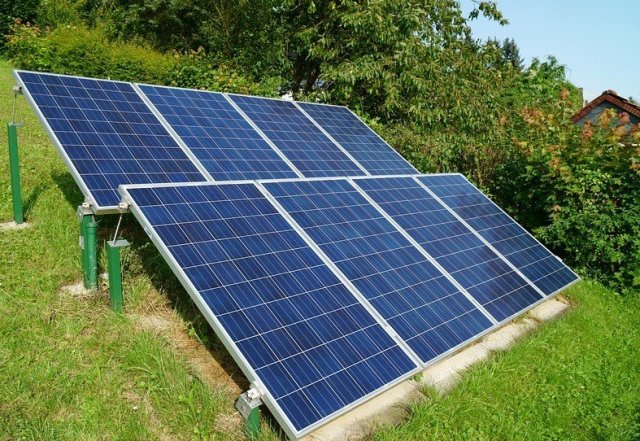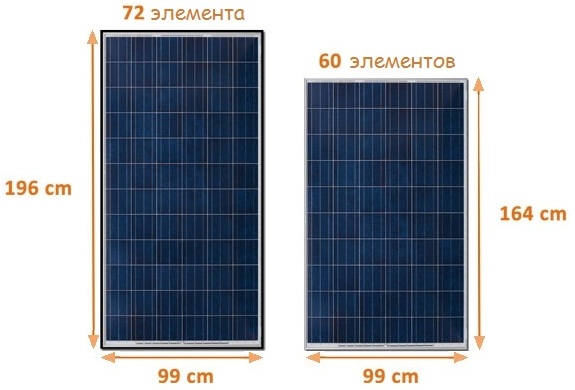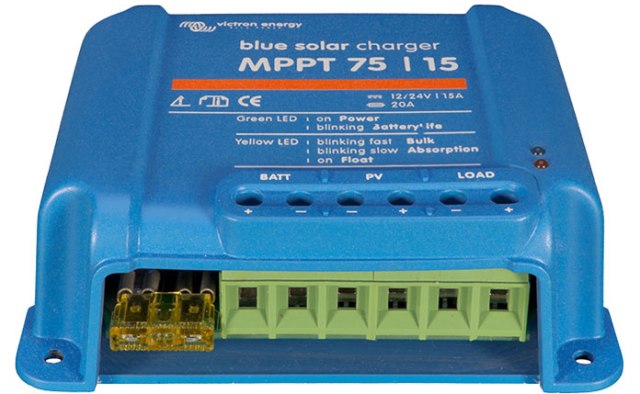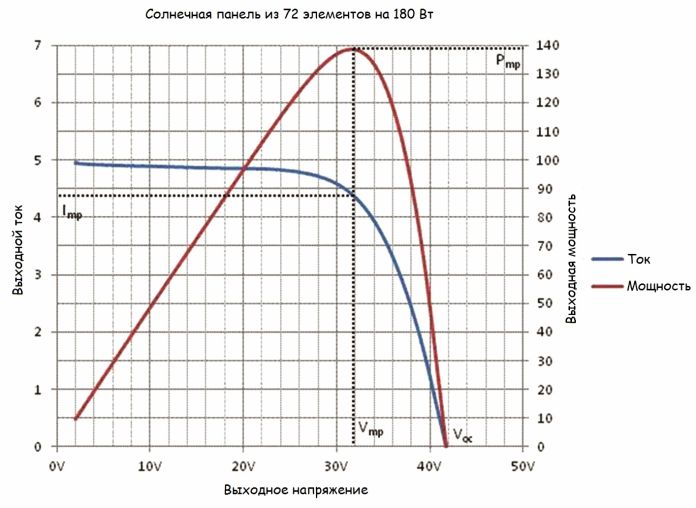Categories: Featured Articles » Autonomous power supply
Number of views: 4920
Comments on the article: 0
Solar Features
Solar panels, also called solar panels or solar modules, are built from separate photovoltaic converters (the so-called solar cells), which are connected to each other in series and parallel circuits, collectively working as a single current source.
Actually one panel can be considered as a current source. Several solar panels form autonomous solar power station, which can be small (if we are talking about for example a private house) or large (if we are talking about industrial solar power plants) power. The size of a solar station depends on its purpose and on the needs of its consumer.

One solar panel usually contains the number of elements in multiples of 12, namely: 12, 24, 36, 48, 60 or 72 solar cells. The rated power of one such panel usually lies in the range from 30 to 350 watts. Accordingly, the size and weight of the panel is greater, the greater its rated power.

Today, the real efficiency of solar panels available to a wide consumer lies in the range from 17 to 23%. There are separate copies declaring efficiency up to 24%, but these are more likely exceptions and exaggerations. Labs around the world are committed to developing solar cells, Efficiency which at least approached 30% - this would be a very good result for an energy source of this type, if you look at things realistically.
Silicon-based solar cells, as an alternative source of electrical energy, are time-tested, they are reliable and safe, compact and relatively affordable. The term of their normal operation reaches 30 years and even exceeds. Although, in fairness, it is worth noting that silicon photovoltaic cells degrade over time, this translates into a decrease in power received in full light by about 10% of the original rating for every 10 years of active use.
That is, if in 2019 a new 300 W solar panel was purchased, then by 2039 it will be able to produce a maximum of 240 watts. For this reason, the installed capacity of the system with a certain current margin should be calculated. As for thin-film elements, they have not been tested by time, but experts say that the rate of degradation in their first years is many times higher than that of single-crystal and polycrystalline silicon elements.
In normal use, neither replacement of the elements nor any other special maintenance by single-crystal and polycrystalline solar panels is required. They are easy to install, do not contain moving parts, their surface facing the sun always has a protective mechanically strong coating.
The current-voltage characteristic of solar cells is removed in laboratory conditions during production and is given in the specification. The standard test is carried out with radiation of 1000 W / sq.m at an ambient temperature of 25 ° C, as at a latitude of 45 °.
Here you can see the extreme points of the current-voltage characteristic at which the power removed from the battery vanishes. Open circuit voltage - Voc is the maximum available voltage at the battery output when the load circuit is open. The current with a short-circuited load circuit - Isc - is, accordingly, the current at zero output voltage.
In practice, the battery always works in some optimal mode, somewhere in the middle between these two points. At the optimum point, MPP is the maximum load power. The rated voltage for the maximum power point is denoted by Vp, and the rated current for this point is denoted by Ip. At this point, the efficiency of the solar panel is also determined.

In principle, the solar battery is able to work at any point of the I-V characteristic, however, to obtain maximum efficiency it is useful to use the point of high power, therefore, solar panels never feed the load directly. To achieve better efficiency, between the solar battery and batteries (inverter) should be connected MPPT charge controller, which will always work at the point of maximum available power at any current intensity of sunlight.
See also at i.electricianexp.com
:

